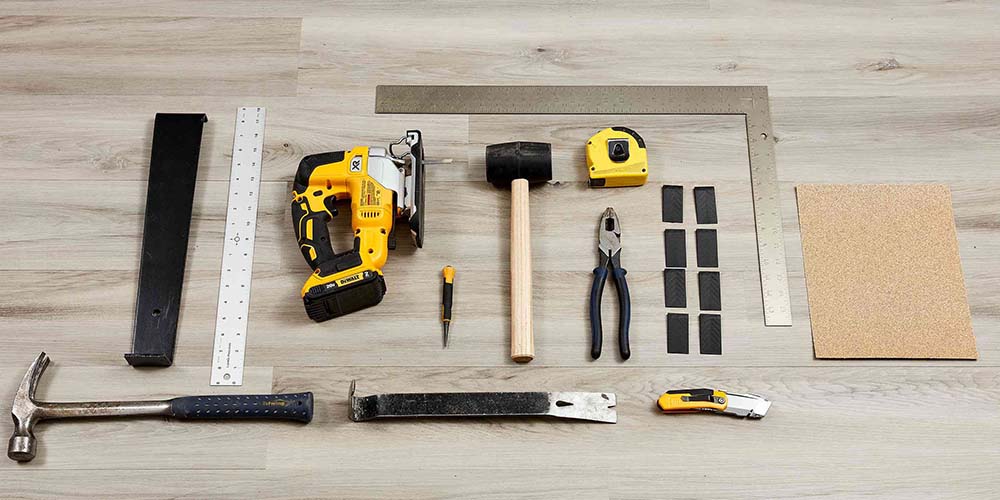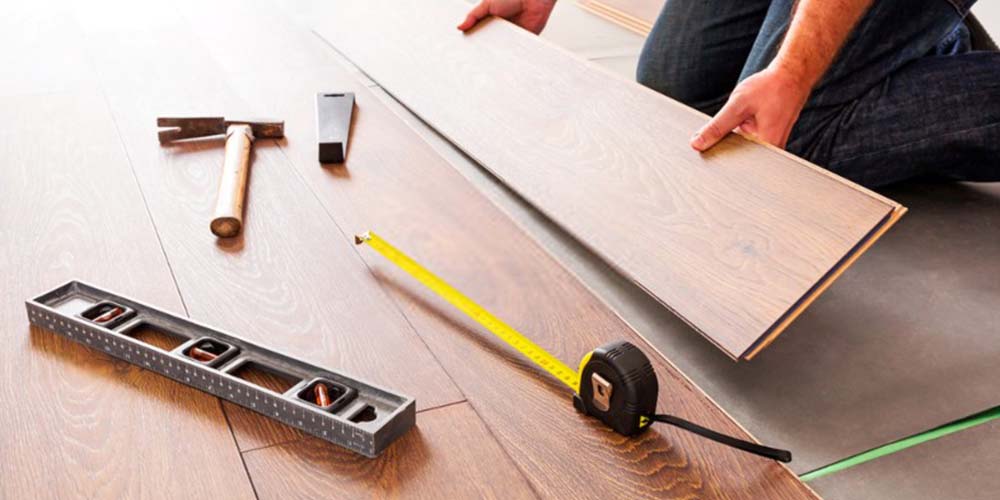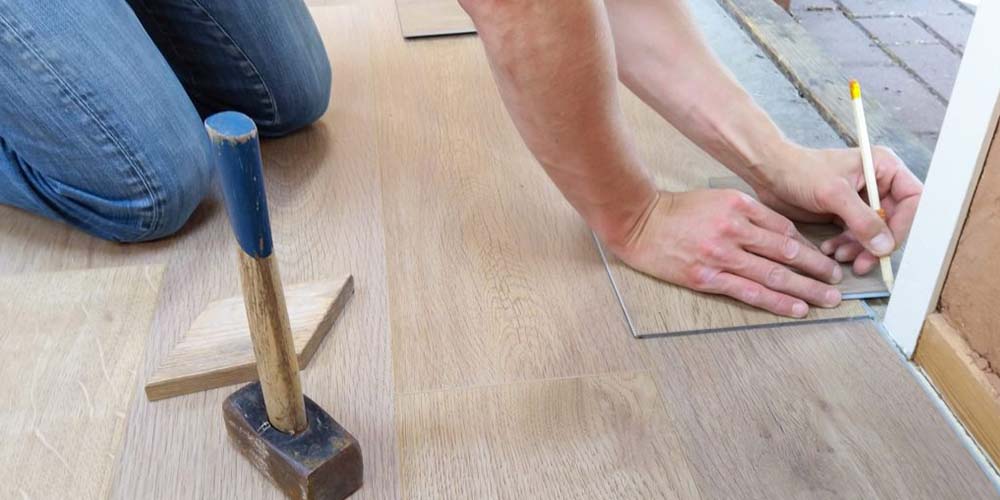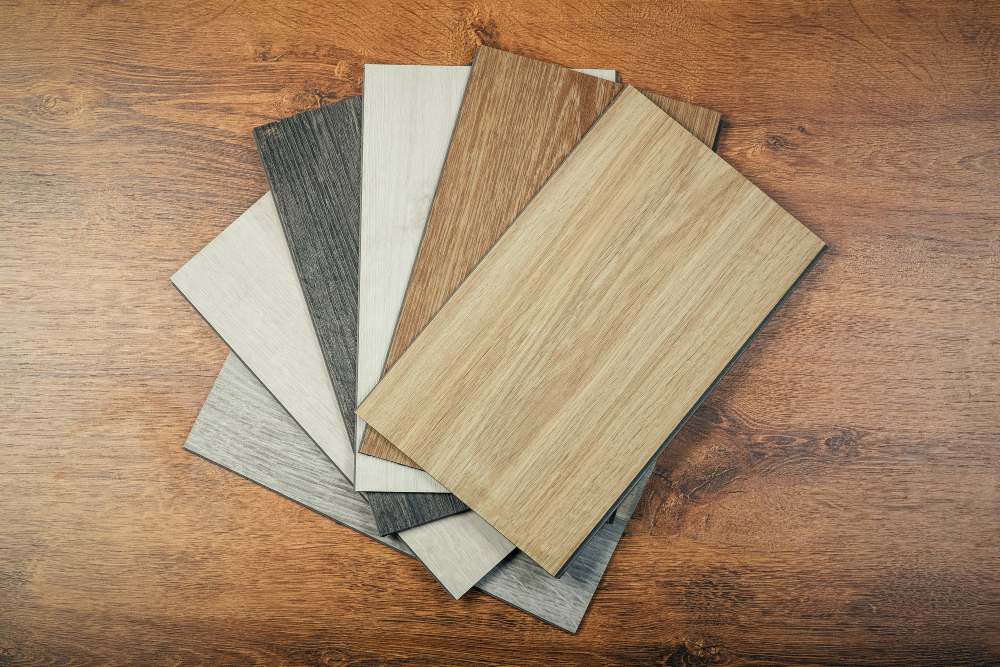Many homeowners in the United Kingdom prefer vinyl flooring. But why? Well, vinyl floors are durable, affordable, and easy to install. If you want to update your flooring, installing vinyl floors yourself is a great way to save money and get the look you want.
Whether you’re a seasoned DIY enthusiast or a first-time renovator, installing vinyl floors can be a gratifying and relatively straightforward project that adds a touch of elegance to any room.
Even if you think it is a bit tricky, I am here to make things easier. In this detailed guide, I will walk you through all the steps on how to install vinyl floors yourself. I will also provide some essential tips and tricks to help you do the right job. Read on to learn more!

Tools and Materials Required
Prior to getting on the journey of inaugurating vinyl floors, you should first gather all the tools near you. Doing this will save you time and make the procedure easy and smooth. You’ll need the following supplies.
- Measuring Tape
- A craft knife or a pair of scissors
- A pen or pencil
- Flat pry bar
- Pliers
- An adhesive trowel
- Vinyl adhesive
- Double-Sided Tape
- A mitre box
- A Stanley saw
- A hammer and nails/ Wood adhesive
Once you collect all these tools and materials, you’re fully ready to get along the journey with me. Let’s fit the vinyl, as nobody has ever done so!

How to Install Vinyl Floors?
Remove the Trim Mouldings
To make installing vinyl floors easier, I always remove the trim that touches the floor, such as baseboards, base shoe mouldings, and door case mouldings. These trims are usually held in place with small nails that look like brads.
To remove them, you can use a flat pry bar and carefully pry the trim away from the wall. Once the trim is removed, you may notice the nails (brads) still stuck in the trim. You can take them out by pulling them straight through the backside of the moulding using pliers.
NOTE: If the trims are still in good condition after removal, you can keep them aside to re-install once the vinyl floor is in place.
Prepare the Subfloor
When installing vinyl flooring, you should prepare the floor properly to ensure a smooth and flawless result. Vinyl is soft, so any imperfections on the subfloor will be visible on the surface.
First of all, just like with any other type of flooring, clean the subfloor. Remove any debris, dust, or dirt from the floor surface to make a smooth foundation for the vinyl. Now, it’s time to level it.
- Concrete Subfloor – If you install vinyl flooring over a concrete subfloor and notice any cracks or uneven spots, use a concrete patcher to fill them in.
- Plywood Subfloor – Check for any depressions or low spots for plywood subfloors. If you find any, apply a floor-levelling compound to fill them in and create an even surface for the vinyl flooring.
Once you have laid the compound, let the vinyl flooring fully dry. And leave the new vinyl flooring out of its packaging for at least 24 hours, so it adjusts to the environment where it will be installed.
Cut the New Vinyl Flooring to Appropriate Size
Take out your new vinyl flooring and measure each side of your room. Then, unroll the vinyl and cut it to fit those measurements. It’s a good idea to leave an extra 15 cm of material on all sides of the piece you’re cutting—you may need it later.

Install the Vinyl in The Appropriate Direction
When installing vinyl flooring, there are a few things you should always keep in your mind.
- When you install your vinyl flooring, its direction is quite important. Generally, it’s best to lay the vinyl in the same direction as the room’s main source of natural light.
- On the other hand, if your room is narrow, you should have the vinyl planks running along the room’s length.
Well, that said, the following are the ways to install vinyl for different room sizes.
For Small Rooms
If your room is small, which means it’s around 12 square metres or less, a loose installation will work just fine. You can lay the vinyl flooring directly over the subfloor without additional adhesives.
For Medium-Sized Rooms
For rooms between 12 and 25 square metres or ones that will have a lot of foot traffic, using double-sided adhesive tape is recommended. You can place this tape around the room’s edges to securely hold the vinyl flooring in place.
For Larger Rooms
If you have a larger room measuring over 25 square metres, you should use glue to secure the vinyl flooring. Before laying the vinyl, apply glue to the subfloor so the vinyl stays firmly in place and provides a durable installation.
Trim and Finish
If you have any excess vinyl around the room’s edges, use a utility knife and straightedge to trim it neatly. Be cautious to avoid cutting too close to the wall to allow for any potential expansion. Cut the vinyl to fit accurately for spaces around objects like pipes or corners.
Re-Install the Trim Mouldings
Once you’ve laid the vinyl floor, it’s time to return the baseboards and trim. If the existing ones are in good condition, you can reattach them. But if they are damaged or unsuitable, buy new ones, measure your room, and cut them to the right size using a saw.
You can either glue the baseboards and trim in place or use a hammer and nails to secure them. If you choose to use nails, use a nail set to make the nail heads sink below the trim’s surface for a smooth finish.


![How to Install Vinyl Floors? [In 6 Simple DIY Steps]](https://qflooring.co.uk/wp-content/uploads/2024/05/Wooden-Floors-Fitter-300x197.jpg)
![How to Install Vinyl Floors? [In 6 Simple DIY Steps]](https://qflooring.co.uk/wp-content/uploads/2024/03/Laminate-Floors-Feature-300x200.jpg)
![How to Install Vinyl Floors? [In 6 Simple DIY Steps]](https://qflooring.co.uk/wp-content/uploads/2024/02/Laminate-Floorings-300x200.jpg)
![How to Install Vinyl Floors? [In 6 Simple DIY Steps]](https://qflooring.co.uk/wp-content/uploads/2023/11/Rugs-on-the-Carpet-300x240.jpg)
![How to Install Vinyl Floors? [In 6 Simple DIY Steps]](https://qflooring.co.uk/wp-content/uploads/2023/11/Tools-for-Vinyl-Flooring-300x200.jpg)
![How to Install Vinyl Floors? [In 6 Simple DIY Steps]](https://qflooring.co.uk/wp-content/uploads/2023/10/Clean-and-Maintain-Vinyl-Flooring-300x200.jpg)
![How to Install Vinyl Floors? [In 6 Simple DIY Steps]](https://qflooring.co.uk/wp-content/uploads/2023/08/How-to-Clean-Laminate-Floors-300x200.jpg)